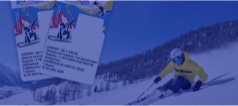BARCELLONA 1992
THE AMAZING EVOLUTION OF THE OLYMPIC TORCHES DESIGN

NATIONS: 169
ATHLETES: 9356 (2704 W)
EVENTS: 257
TORCHBEARERS: 10.448
KM: 6.307 (Greece and Spain)
LAST TORCHBEARER: Antonio Rebollo, archery, a paraolympian who competed in the 1984, 1988 and 1992 summer paraolympic games winning two silvers and a bronze. The only paraolympian ever to light the Olympic cauldron, Rebollo shot a flaming arrow over an open natural gas brazier to ignite it
The torch was designed by André Richard and produced by Kromschröder. The design of the silhouette of the figure is simple and consists only of lines. Each line is designed with a different color: the head is blue and symbolizes the Mediterranean, the arms are yellow and they stand for hospitality and the feet are red and embody the symbol of life. The torch is made of aluminum, plastic and metal. 10.488 torchbearers (of which 599 cyclists) traveled the 6.307km in Greece and Spain. The American Dream Team of Basket made its debut. For the first time since 1972, the Games were boycott-free, due to important global political changes. Apartheid had been abolished in South Africa. Then there was the fall of the Berlin Wall and the reunification of West and East Germany. Communism had ended and the Soviet Union was divided into 15 separate countries which participated as a "unified team”. Badminton and women’s judo were added to the Olympic program. Impressive performer was gymnast Vitaly Scherbo, who won six golds, four of which in one day. In the last lap of the 10,000m final, Derartu Tulu of Ethiopia darted into the lead and went on to win. At the finishing line, she waited for her opponent Elana Meyer, a white South African. They set off hand-in-hand for a victory lap that symbolized hope for a new Africa.




